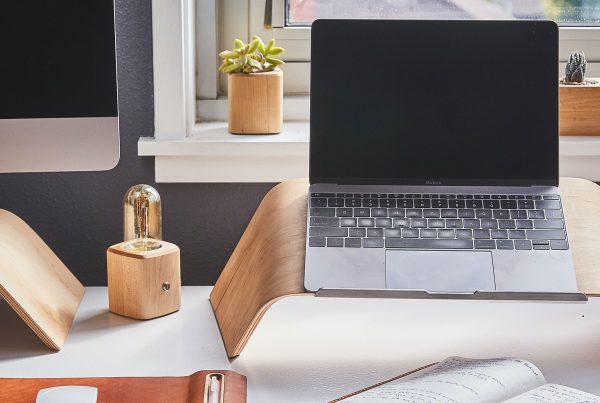If you are trying to live life on a budget, there are many habits that will help you achieve financial freedom. One of those habits it to protect yourself against future setbacks. Adding an emergency fund to your monthly budget is the best way to do that. Having an emergency fund sets you up to meet those sudden expenses without having to rely on credit or causing disruption to your budget. Whether it happens to be a job loss, medical bills, or car repairs, an emergency fund will act as a financial cushion in times of distress.
Let’s look at an example of how valuable an emergency fund can be:
Sarah started budgeting her money two years ago and included an emergency fund in it. Last month, Sarah was driving to work when her car started making a weird noise. After a few miles, it broke down on the side of the road.
Now, Sarah didn’t panic because she knew she had her emergency fund to rely on. Instead, she called a tow truck to take her car to the nearest repair shop. After assessing the damage, the mechanic informed her that her car’s engine needed some major repairs, which would cost a significant amount of money.
Thanks to her emergency fund, Sarah didn’t have to stress about how she would cover the repair expenses. Instead, she simply paid for the repairs from her emergency fund, allowing her to get her car back on the road without any financial worries.
Having an emergency fund provided Sarah with peace of mind and a sense of security in an unexpected situation. She was able to handle the expense without going into debt or dipping into her regular savings. Additionally, she was able to repair the car rather than be stuck without it for a while. Sarah’s emergency fund allowed her to maintain her financial stability and continue with her daily life stress-free.
Remember, emergencies can happen to anyone, but having an emergency fund ensures you’re prepared for unexpected bumps in the road. It’s like having a safety net that lets you handle unexpected expenses and keeps your financial well-being intact. So, start building your emergency fund today and enjoy the peace of mind it brings!
The Benefits of Having an Emergency Fund
- Peace of mind: An emergency fund gives you peace of mind knowing that you have a safety net and can cover unexpected costs.
- Credit rating: An emergency fund also safeguards your credit score, since you won’t be forced to turn to debt to cover expenses.
- Long-term savings: An emergency fund can help you save for long-term goals. Because you won’t need to borrow or dip into other accounts, you can prioritize saving for large purchases or retirement. This allows you to stay on track with your savings goals and gives you more control over your financial future.
- Flexibility and independence: Having funds readily available allows you to make independent financial decisions without relying on others or being forced into unfavorable situations.
- Job loss protection: If you face a sudden job loss or reduction in income, an emergency fund can provide a cushion to cover your essential expenses while you search for new employment or adjust to the situation.
- Medical emergencies: Health-related emergencies can be costly, even with insurance coverage. An emergency fund ensures you can handle deductibles, co-pays, or any unexpected medical expenses that may arise.
Building an emergency fund is a proactive step toward financial well-being and resilience. It offers numerous benefits and ensures you’re prepared for whatever challenges life may throw your way.
How Much Should You Save in Your Emergency Fund?
Financial professionals typically recommend saving at least three to six months’ worth of expenses for an emergency fund. This is the minimum amount of cash that will provide stability if you’re faced with a significant financial setback.
Of course, the amount you save should be tailored to fit your circumstances; ultimately, you decide what’s most appropriate for your situation. For example, if you’re the main provider in your household, you may want to save up to a year’s worth of living expenses. On the other hand, if you have other reliable sources of income, you may need less coverage.
A good method is to calculate your monthly expenses and multiply the total by the number of months you went to cover in case of an emergency. Then, strive to regularly save that amount each month in addition to your regular savings. Make sure to keep your emergency fund account separate from your other savings (we will get into that in the next section).
If you can save more than the recommended amount, that’s great. But if you can’t, don’t worry. The important thing is to start with an amount that’s realistic for your budget, then gradually add more savings to reach your goals. In reality, something is better than nothing. Even just $10 per paycheck adds up quicker than you think.
Where Should You Keep Your Emergency Fund?
The money in your emergency fund needs to be easily accessible when you need it. Your emergency fund should be saved in a liquid, accessible account. This could include a savings account, a checking account, a money market account, or Roth IRA.
This account should be separate from any other accounts and should not be linked to any trading accounts or investment accounts. The reason for this is to protect your emergency fund from market volatility; you don’t want to risk losing money that you will potentially need in an emergency.
It is also important that you select a financial institution that has a sound reputation and is FDIC insured. Having your emergency fund in one of these institutions will ensure that your money is in a safe and secure place.
If you choose not to use a financial institution for your emergency fund, an envelope and a safe in your house will work too! The important thing is that you start the fund now so that you have that security later.
How To Build Your Emergency Fund
Building an emergency fund is crucial, but sometimes, it can seem overwhelming. It’s easy to feel like you don’t have enough money even to start. That doesn’t mean you can’t; it just means you must get creative. There are many practical ways to save money for emergencies. Here are five tips to help you start building and maintaining your fund:
- Start small – start by saving even small amounts each month. Put away what you can, even if it’s only $40 per month.
- Prioritize the fund – by making it a priority to save for an emergency, you’re telling yourself that it’s essential to plan for the future and provide for yourself if and when an emergency arises.
- Set a goal – once you decide how much you want to save, make a goal and create a plan to reach it.
- Automate the process – set up an automatic transfer from your checking to your savings account so the money automatically comes out of your paycheck and into your emergency fund.
- Reassess and adjust – this is important every few months. Things in life change, and you should make sure your emergency fund is growing with you as needed.
Replenishing Your Emergency Fund
Most likely, you will use your emergency fund. After all, that’s what it’s for. And when that time comes, you will have to look at replenishing the fund. Don’t get discouraged, you built the fund before, and it was probably easier than you thought it would be, right?
Remember, the key is to be consistent, stay focused, and make saving a priority. Then, with determination and a solid plan, you can successfully replenish your emergency fund and be well-prepared for additional future financial surprises.
Unexpected emergencies can happen to anyone, and they do. Implementing an emergency fund into your budget can safeguard yourself and your financial health against these occurrences. In addition, the peace of mind and financial freedom an emergency fund gives you can make life much more stress-free.











